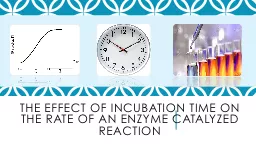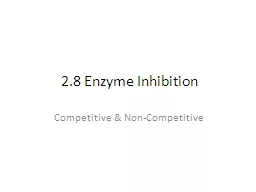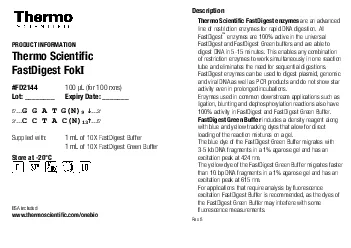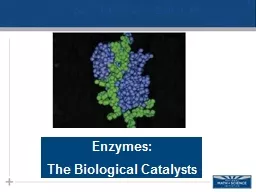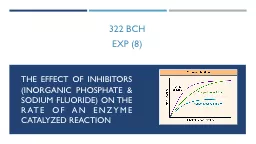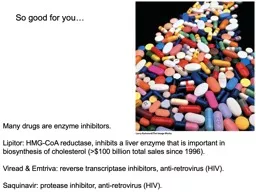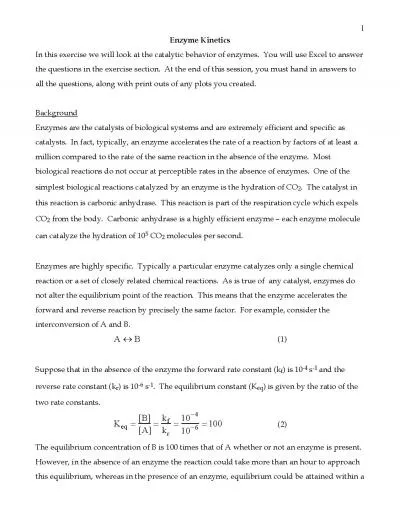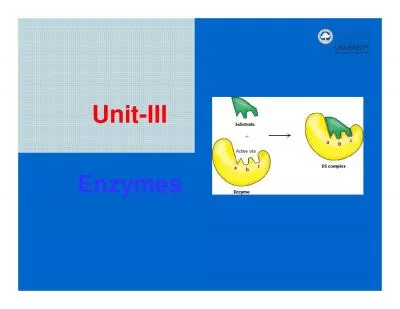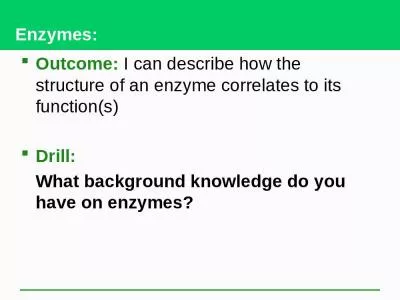PPT-The effect of incubation time on the rate of an enzyme catalyzed reaction
Author : giovanna-bartolotta | Published Date : 2018-02-19
Objectives To monitor the progress of an enzyme catalyzed reaction Acid phosphatase To determine the initial rate of the reaction V i Important terms and points
Presentation Embed Code
Download Presentation
Download Presentation The PPT/PDF document "The effect of incubation time on the rat..." is the property of its rightful owner. Permission is granted to download and print the materials on this website for personal, non-commercial use only, and to display it on your personal computer provided you do not modify the materials and that you retain all copyright notices contained in the materials. By downloading content from our website, you accept the terms of this agreement.
The effect of incubation time on the rate of an enzyme catalyzed reaction: Transcript
Download Rules Of Document
"The effect of incubation time on the rate of an enzyme catalyzed reaction"The content belongs to its owner. You may download and print it for personal use, without modification, and keep all copyright notices. By downloading, you agree to these terms.
Related Documents

